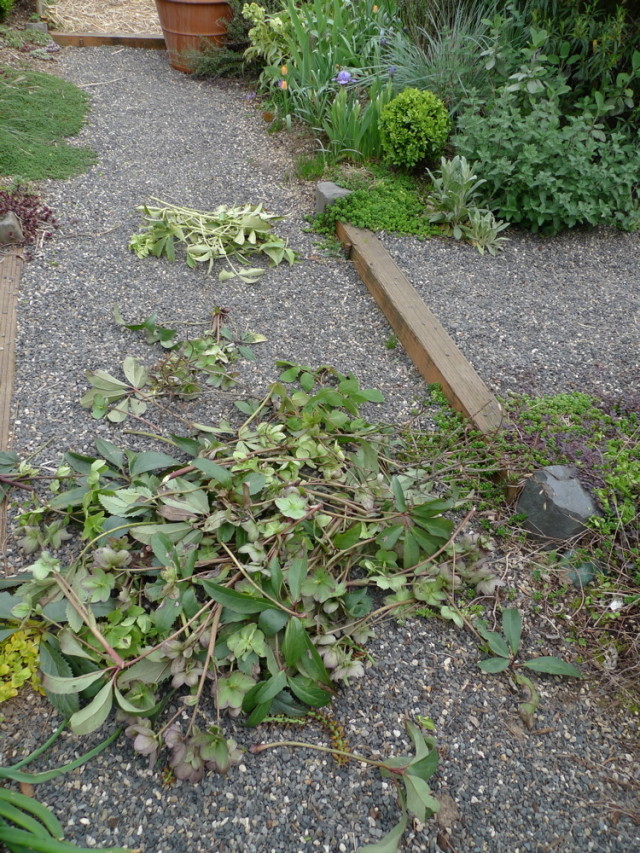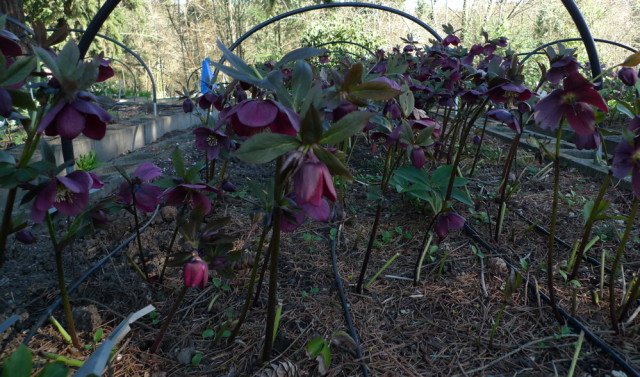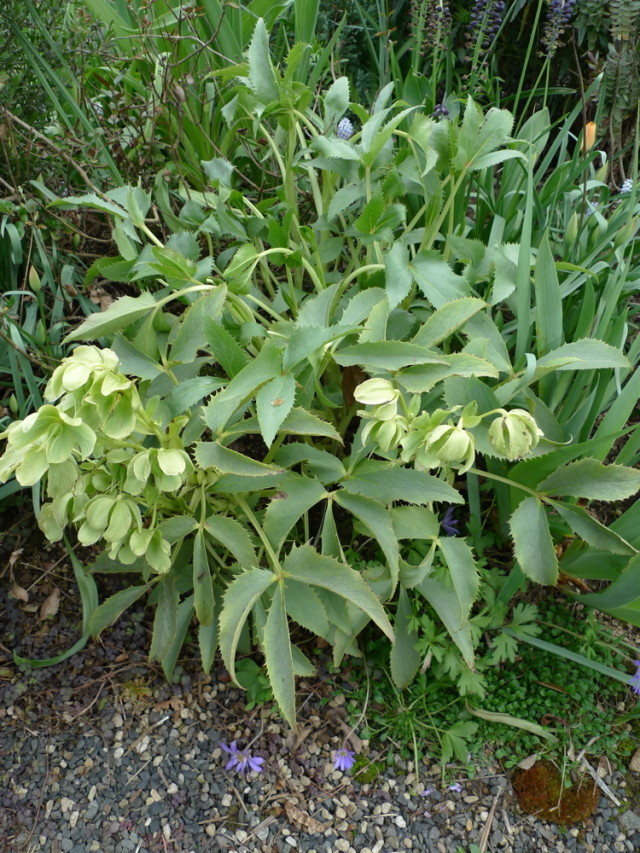Hellebore Maintenance

Winter-flowering hellebores have become very popular in recent years. One type, the Lenten rose (Helleborus x hybridus), was named Perennial Plant of the Year in 2005 by the Perennial Plant Association. This hellebore and its close relatives (the Corsican hellebore, the Christmas rose, and other hellebores) produce beautiful flowers in the depths of winter. Most are easy to grow, tolerant of tough conditions and divinely beautiful. That’s why they are popping up in gardens all over town.
But there’s a teeny little chore associated with having these plants which greatly enhances the tidiness of the plants and keeps them healthy and looking good over time.
This simple task is to cut back the previous year’s foliage and flowering stems.

A “before” picture of the Lenten rose (Helleborus x hybridus), taken in January. See the winter-damaged leaves? Those can go. Then you’ll be able to see those little pink flower buds as they develop into lovely flowers. If you didn’t do this in February, that’s okay – you can do it now. Just feel the leaves – keep the fresh green ones and remove the tough old leathery ones.
With the Lenten rose (Helleborus x hybridus), cut the previous year’s foliage back to the base right as the flowers begin to emerge in January or early February. This lets you really see the flowers and also prevents a fungal disease that can spread from the old leaves (if you leave them on) to the new leaves. So if you were "in-the-know," you would have cut the old leaves off then. If not… well, you can do it now!
{% display:image for:post image:2 align:left width:280 %}

This photo of a patch of Lenten rose (H. x hybridus), taken in February, shows the foliage already cut back. New foliage appears in February to April.
The Christmas rose (H. niger) flowers in late December or early January but the flowers look pretty for months. Cut flowering stems and old foliage back as the new growth emerges and flowers fade, from February through April. Or, whenever you get to it. (Hellebores are amazingly forgiving.)
The old flower stalks of the "stinking hellebore" or, more politely, the bear’s claw hellebore (Helleborus foetidus) can be cut back about now, if you haven’t done it yet.
All other kinds of hellebores… now is the ideal time to cut back the foliage, as the flowering season for these late types ends. The late types include the Corsican hellebore (H. argutifolius) and hybrid hellebores like H. x sternii.

This image shows a half cut back hellebore (H. argutifolius ‘Silver Lace’). Foreground: the tough, leaning old flower stalks that are nearing the end of their season (to be cut back). Background: the old flowering stalks have already been removed and you can see the new leaves.
Here’s how to cut back a hellebore:
Get your clippers and cut all the tough older leaves and flowering stems at the base. You’ll see the soft, tender new foliage emerging from the center of the plant – keep this, as it will replace the tough outer stems and leaves that you cut off. If in doubt about which is which, feel it. The old foliage feels tough, leathery, hard. The new growth is flexible and soft! Don’t be alarmed if the new foliage is sort of wilty-looking. It’s been growing underneath the shelter of the old foliage. Just give it a few days in the wind, rain and sunshine and it will toughen up.
You can also leave some old flowers on the plant so the seeds can ripen. Especially with the Lenten rose, you’ll often end up with a little forest of seedlings underneath the mother plant the following spring. Dig them up and share them with friends or spread them around your own garden.
Cutting off the old stems and leaves keeps the plant tidier. It also keeps hellebores healthier, as it gets too congested and invites disease and aphid infestation. So give it a quick clean-up in spring and your plant will look better – and flower better next winter.
